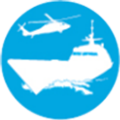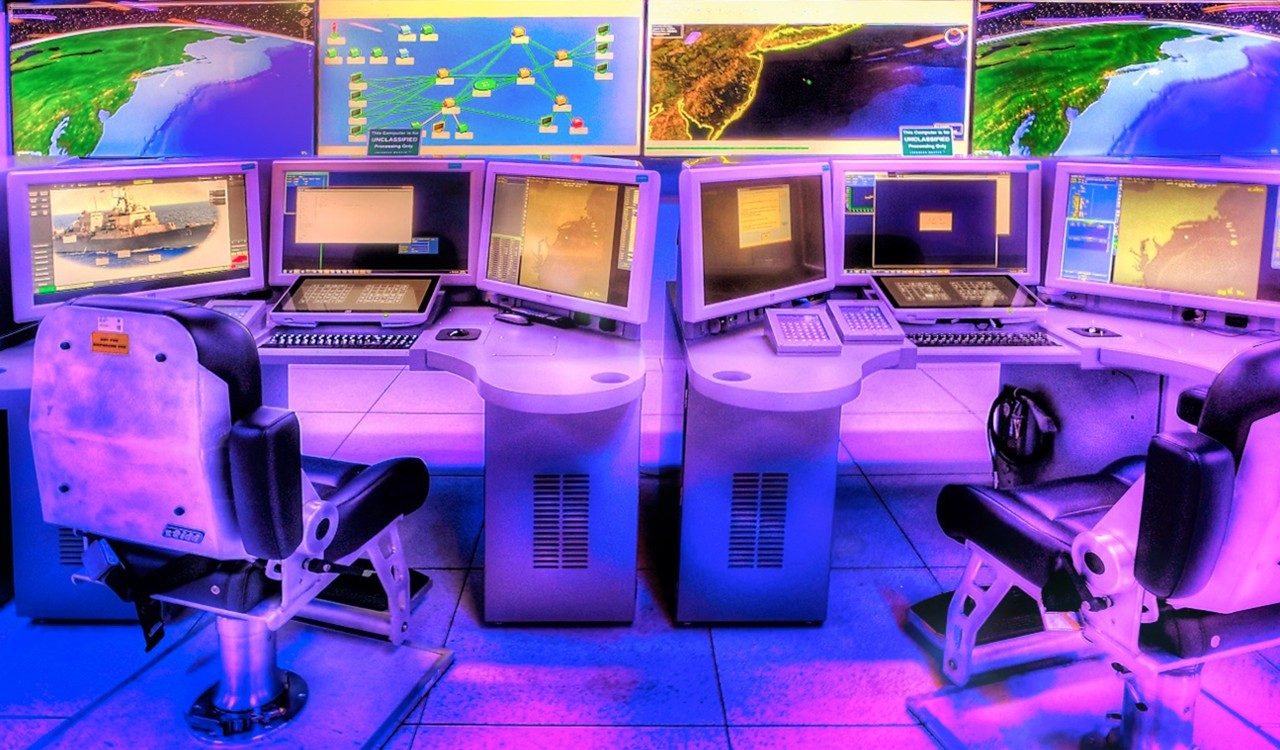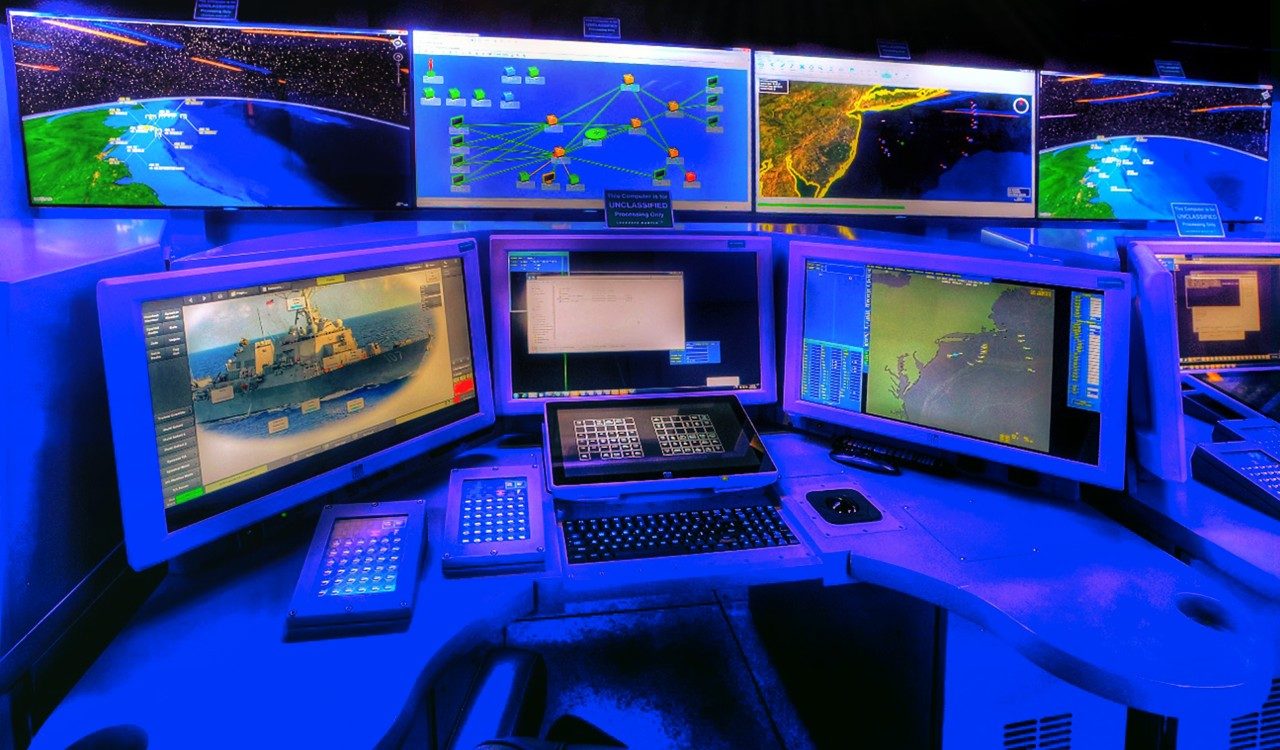
Imagine a ship at sea—a frigate, a destroyer, or even an amphib—all alone, yet connected to the vast firepower of the U.S. Navy. With eyes in the air, in space, and over the horizon—this solitary ship can project power or mount a strong defense against missile, air and surface attack. No access denied, no sea lane closed. That’s distributed lethality.
The ability of potential adversaries to create anti-access/area-denial (A2/AD) environments is a threat to the U.S., its allies and global trade. To maintain freedom of the seas and deter aggression, the U.S. Navy has chartered a path to counter A2/D2 through distributed lethality, as proposed by Vice Admiral Thomas S. Rowden.
Under the distributed lethality strategy, the fleet can project power over greater distances. Accomplishing this goal requires proven, reliable combat systems that tie together the fleet—and all available resources on air, sea and space—to enable ships to fight as one over greater distances and to mount a robust individual self-defense.
This will require new weapons systems, such as LRASM, and capabilities, such as NIFC-CA (Naval Integrated Fire Control-Counter Air), which allow ships to see—and fight—opponents over the horizon.
The F-35 Lightning II teamed with the Aegis Weapon System as a literal “eye in the sky” in the latest NIFC-CA demonstration. The F-35B served as an airborne sensor that could detect potential threats. Once the aircraft identified an over-the-horizon threat, it sent the data to the Aegis Weapon System. Based on that data, Aegis initiated the sequence to engage and intercept the threat.
Behind the Fleet: Elements of Distributed Lethality

Hardware
“We’re transforming how the Navy’s hardware – which includes manned and unmanned fixed wing and rotary wing aircraft, ships and submarines, and various weapons – will operate in a contested environment,” said Joe North, vice president of Littoral Ships and Systems at Lockheed Martin. “For example, we’re working with the Navy to add over-the-horizon missiles to enhance the lethality of today’s Littoral Combat Ship fleet, while also designing a Frigate designed for future fights.”

Systems
“Naval combat and C4ISR systems are designed with an open architecture, meaning that they are designed to easily integrate new technologies, sensors, or weapons systems from any source, as well as share new capabilities across the fleet,” said Jim Sheridan, Lockheed Martin director of Aegis Combat System programs. “The Aegis Common Source Library allows us to create combat systems with an Aegis Baseline 9 pedigree suitable for a diverse array of ships, from Littoral Combat Ships to amphibious transport ships and beyond—creating a full suite of capabilities to effectively extend the range and lethality of the surface fleet.”
In the midst of innovation, we weave in cyber security solutions that defend against kinetic and non-kinetic threats. Cyber is ingrained in the fabric of our systems and continues to assume a major role in strengthening our technologies at sea. Our Cyber Inside Platform Protection initiative focuses on internal collaboration to share information and network defense capabilities that secure the platforms we develop. Everything we do, every program we administer, every product we develop, has a cybersecurity thread running through it.

Future Systems
“With low size, weight and power, laser weapon systems offer a simplified approach for ship integration to advance defensive and offensive capabilities against threats,” said Rob Afzal, Lockheed Martin senior fellow. “Our directed energy solution offers a continuous magazine with low maintenance, and low cost per engagement with high availability.’”

Training
“Training the fleet to respond to current and future threats requires a flexible and affordable configuration that implements advanced virtual technologies to prepare sailors for naval missions,” said Dave Scott, vice president of Business Development for Lockheed Martin’s Training and Logistics Solutions. “From individual systems to full crew training systems, we’re optimizing the training experience through feedback and networked engagements.”

Moving New Capabilities from R&D to Ships at Sea
At the heart of the process for technology upgrades is research and development collaboration among warfighting experts, academia and industry. Sharing best practices and lessons learned helps to spark innovations that increase affordability and efficiency, and provide sailors at sea and ashore with the information needed to make intelligent decisions.
Facilities like the U.S.-based Surface Navy Innovation Center and Area 51, Canada-based IMPACT Centre and Australia-based Submarine Combat System Laboratory accelerate the collaboration process from concept to implementation.





